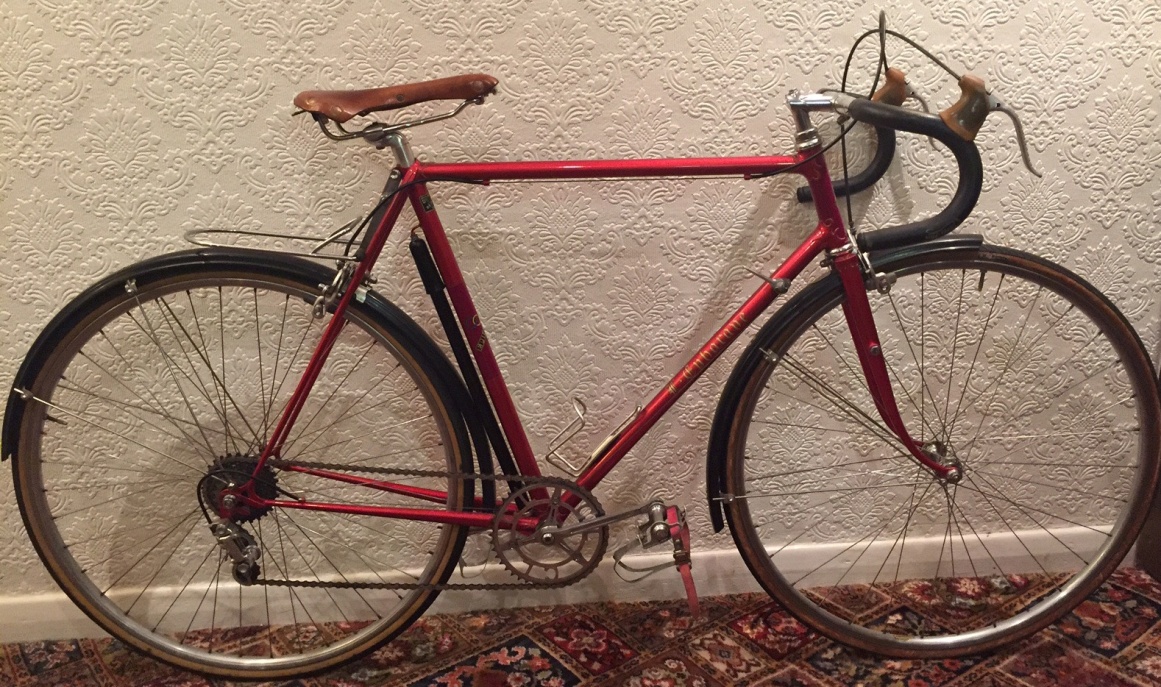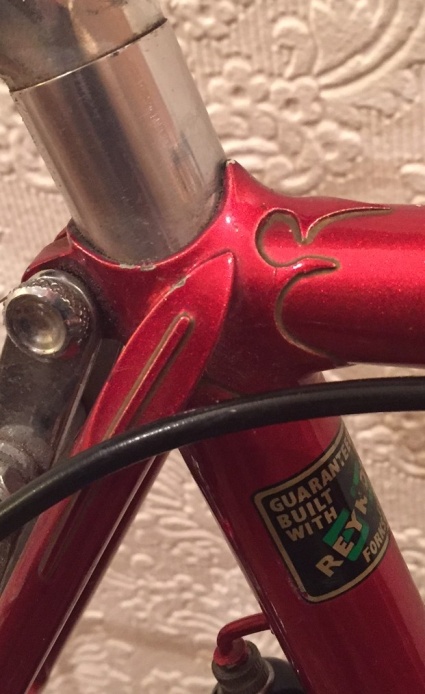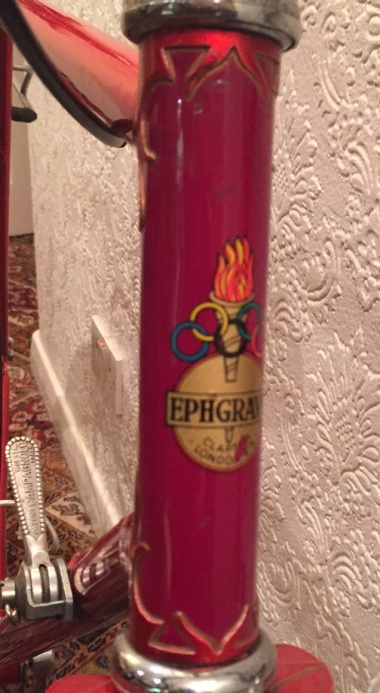Vol. 2, Issue 60 - November / December 2015
Posted: Sunday 15th November 2015
We are starting this edition with this delightful image of a Bates family outing with mother on a Bates solo and father with daughter on a very rare Bates tandem sent to me by David Twitchett. The child has its own chainset/BB clamped high up the rear seat tube to allow junior pedalling. Judging by the size of the frames, brakes, etc. I would guess this is just pre-war or possibly immediately post-war and using machines stored for the duration of the conflict. I knew one family who travelled out early on Sunday mornings with a similar configuration. At the early morning time trial father took over the solo, took off mudguards, saddlebag, etc. and then rode the time trial. After the event they would swap back and ride the rest of the day on a club run.
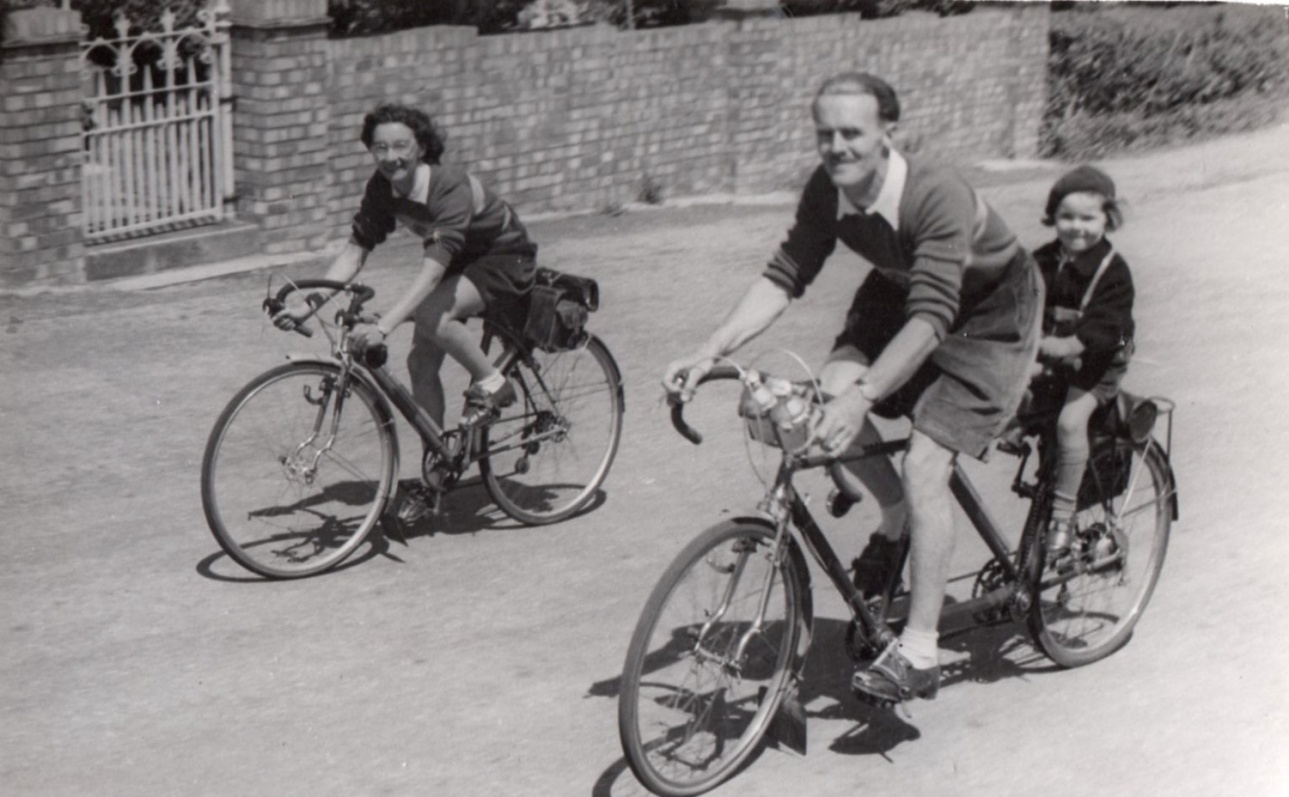
Both machines have Resillion brakes with an additional hub brake on the tandem to help with retarding on hills! The drive from the child’s chainring is on the left-hand side and the normal rear chainset has an additional small ring on the left to take this drive.
We recently returned from two weeks holiday in Italy where we spent the first eight days cycling from Zadina, close to Cesenatico on the Adriatic coast.
We mentioned having our bikes sent by courier in the last edition when we holidayed in Germany. This time we did the same and the bikes were there ready for us when we arrived. After the eight cycling days we left the coast and caught the train to Venice for the rest of the holiday to celebrate Patricia’s holiday. The day we left the hotel in Zadina the courier firm collected the bikes from that hotel and they were delivered the day after we returned home to Cambridge from Venice. Just as for the Germany trip everything went like clockwork and this allowed us to travel to Venice unencumbered by two extra large bike cases.
One of the first things we noticed when we went to the hotel bike store were a couple of very attractive bikes that stood out from the others. I saw that the maker’s transfers were “Emross” which was a name I had never heard before and I wondered if they were from mainland Europe.
One was built with steel tubing complemented by a carbon rear end and carbon forks. Where the carbon met the steel at the seat cluster the builder had done some fancywork not unlike classic lugwork. The other slightly smaller frame was brazed like the composite machine but with a very attractive monostay steel seat stay configuration. The quality of the brazing was as good as I have seen after having looked at many in shops and at builders shows such as Bespoked.
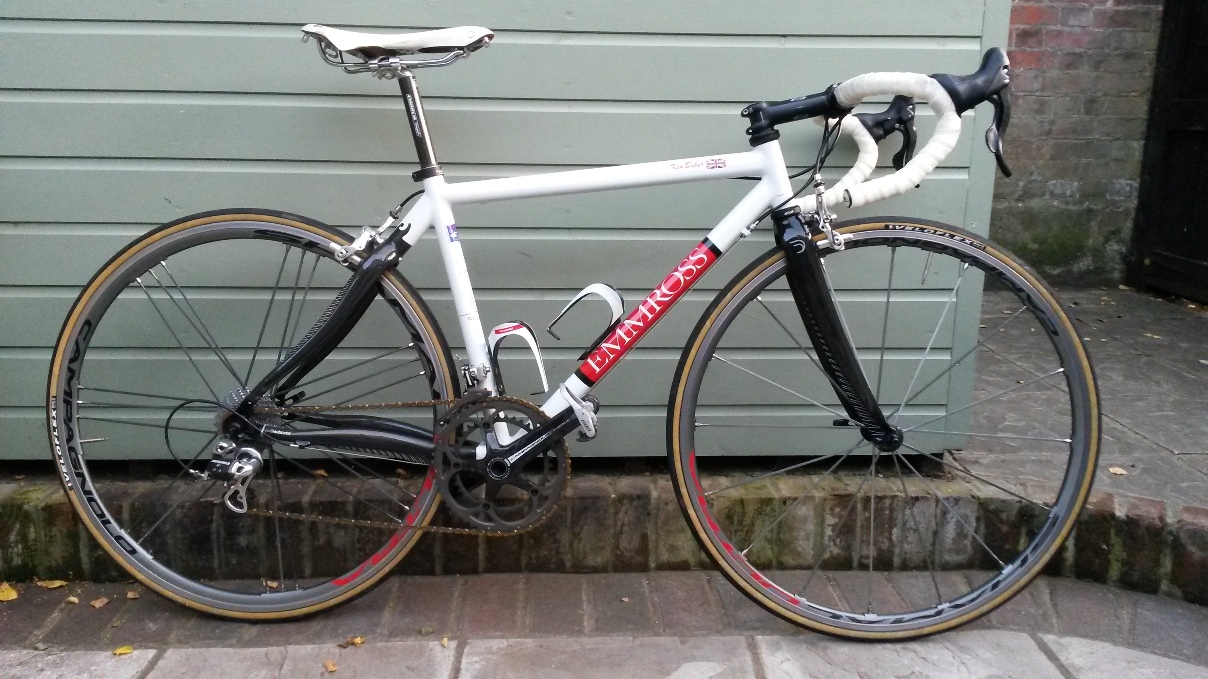
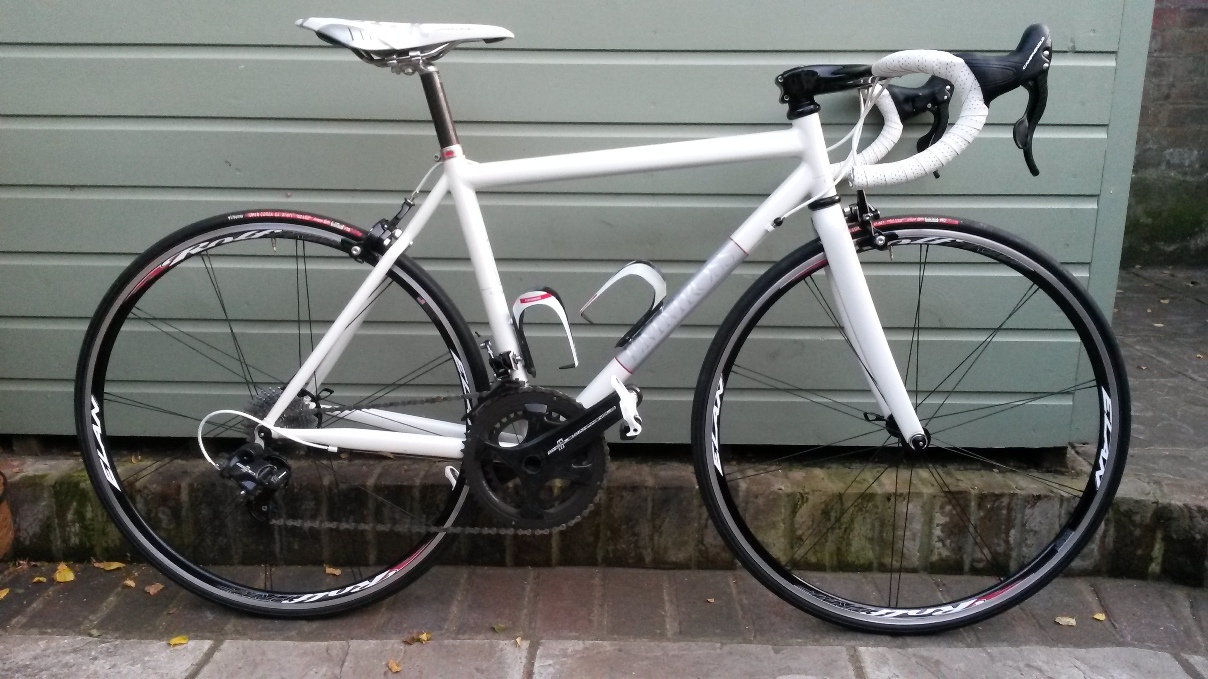
The next afternoon we saw the owners come back from a ride and then later at the poolside where we discovered that they were from the Essex in the UK and their names were Ken and Julia Baker. I then learned that Ken had built the frames himself and I mentioned how impressed we were. He did modestly explain that he welded at times in his “day job”, owning a car repair company.
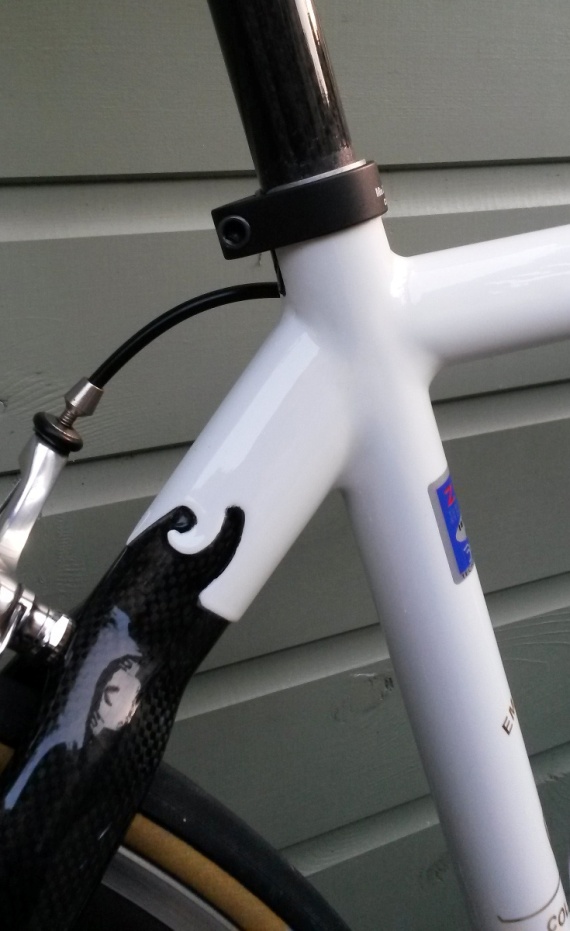
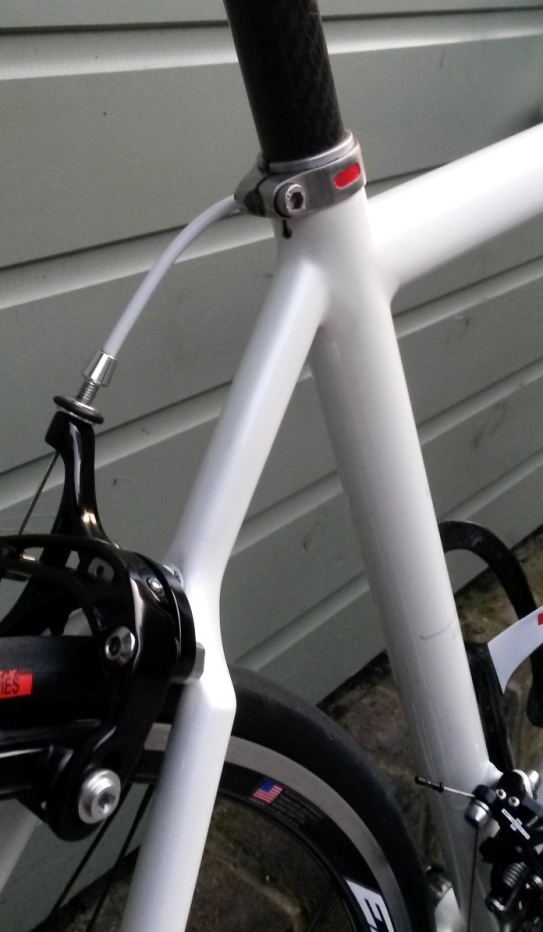
He had decided to make their own machines some years ago when they were both racing in their club, the Colchester Wheelers. These were not the first he built and by now he had an impressive jig to work on. I don’t know if it is just me but I look at a bike and it ether is right or looks just wrong. Both of these came out from the test with flying colours in my eyes. Both machines are equipped with high level Campagnolo components. Ken told me that he had also built a tandem but obviously this was at home so I never got to see it.
I know one or two people who have done frame building courses in order to build a machine for themselves. I once shared a workshop for an evening where a novice was trying to build his own touring frame and having seen him struggle to get the solder into the gap between tube and lug I think I would leave it to the professionals. When the instructing builder took over, the solder just ‘sucked’ its way into the joint in seconds.
Frame sizing
Riding as a teenager in the post-war era I was very aware that everyone around me rode large frames with very little, and no more than about 4-5cm (2 inches) of, seat post showing and with the stem as low as it could be. This is now known as “slamming the stem” – I don’t know where that came from!
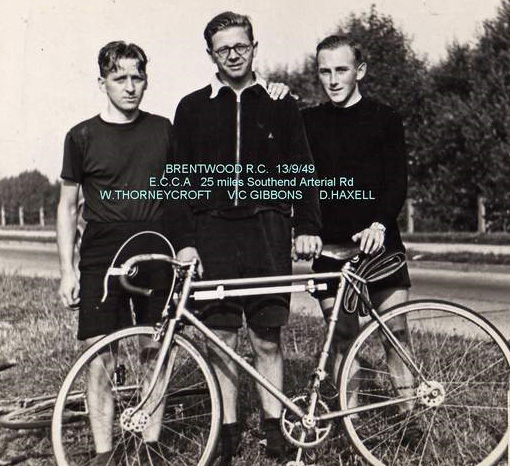
Being some six feet tall I always had more post showing than I wanted, to be in vogue, as the general rule among builders seemed to be that 24″ was the largest frame available. How I envied the shorter riders with their seats set so low as I needed several inches of post. The image below from a Gillott catalogue of the early 50s shows what everyone was aiming for.
This position gave little scope for a really serious low position on the bars, which didn’t matter as much then as the extreme posture was not considered as important in those days, whereas today a flat back is regarded as essential. For those riders seeking a more streamlined position there were several stems such as the Merkens droopy that lowered the bars radically in relation to the frame.
There were also stems with a diagonal drop as well as those with a straight stem having the bar clamp underslung such as the Presto ‘drophead’. Very deep bars were also available to give a lower position and used in conjunction with a dropped stem could give a streamlined position as can be seen below.
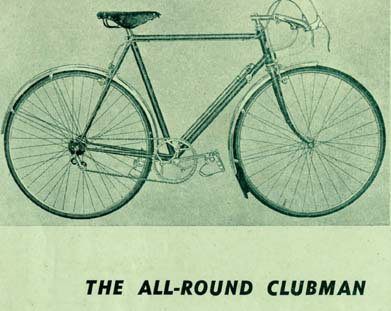
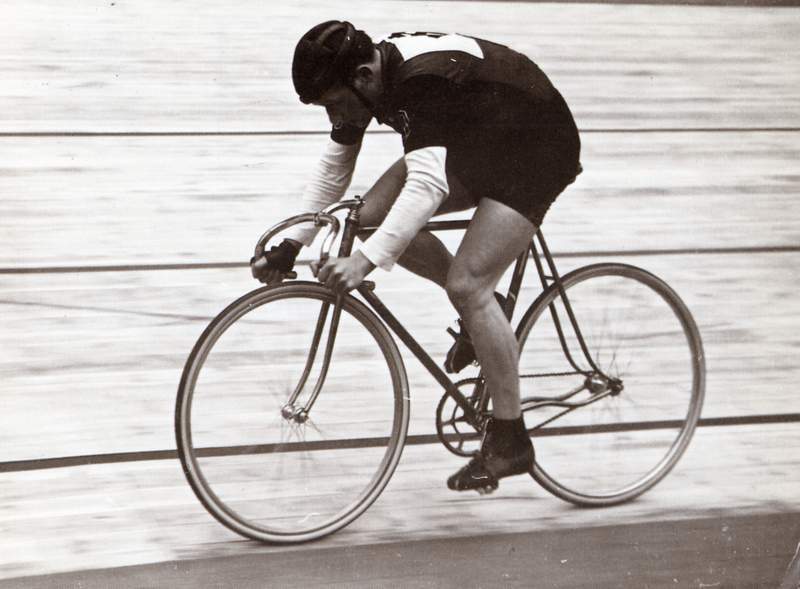
I have just read Lightweight News and your information on tyres, tubs etc. I often have problems with bike shops and “sizes” here in mid-Europe. I don’t know if you know but the actual sizes add to the confusion. A 27 x 1¼ ” tyre when fitted to the wheel has an outside diameter of – yes, it’s obvious, 700mm. A 700 tyre has an outside diameter of 680mm, which is again quite clear? So it is not surprising that it is called here a 28 zoll = inch tyre.
I was told by an Italian cycle builder (may, or may not be correct) that many years ago a company wanted to introduce the 27″ wheels to Europe, measured the OD. and got 700mm. Unfortunately the wheels were delivered too small (680mm) and new tyres had be ordered to fit and this became the standard because in the meantime other continental manufacturers had started to offer the same wheels.
The problem was they continued to call them 700. 700mm = 27×1¼ “? So when you buy a 28” bike here you get a bike with 700 wheels and the tyres have a 600?? number to define the 700 tyre cross section. So when I want a 700mmx23mm tyre I have to buy a 622 tyre which is also quite clear? And here is the big one. This avoids using the very complicated imperial system of measure – inches. Which also has the added disadvantage of being divisible through 2,3,4 and 6 before hitting fractions.
While on a recent visit to the UK I bought an R.O. Harrison trike, (I’d never heard of an ROH Trike) which because of the typical Golden Star quality is being restored and fitted with some updated components and equipped with spike tires and fixed wheel (giving in effect a reverse gear) for use in the winter months. Snow permitting, snow is down to about 2500 meters at the moment.
Bert followed up with this:
The snow has got down to 1600 meters in some areas of our region so it was time to get the trike out for a run (without snow plough hitch). This was the Rhein dam today south of Vaduz, Liechtenstein.
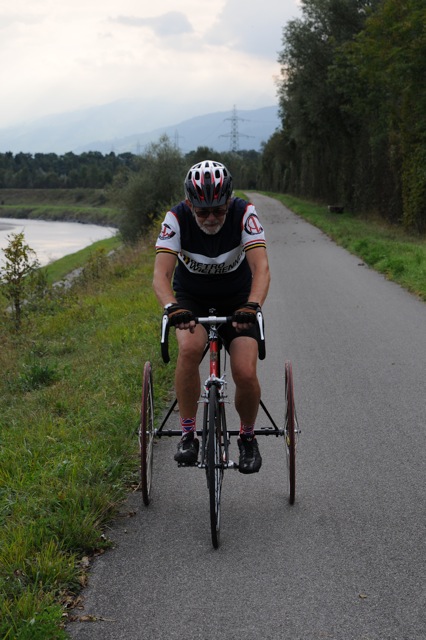
We will be driving down to Toscana Tuesday or Wednesday for the l’Eroica we are expecting temperatures in the 20° to 24° C and the weather should be dry.
Sadly, things didn’t work out like this as the following, sent later, will show.
My wife and I have just arrived home from the l’Eroica. I’m afraid that this year’s event was very untypical, and more akin to a wild-water canoeing event. Torrential rain, made even more uncomfortable by cold high winds, turned many white roads into “milky” coloured becks, covering the road beneath to the point where it was no longer discernible what the surface under it was! Sand, gravel or rock? I’m afraid much use was made of 24″ gear, particularly on the very steep descents. Sight was also very much restricted and at times due to the torrential rain down to a few meters, and as you may well know 1953 G B brakes are not the most efficient under these conditions. I’m afraid at mid 70, our reactions are not as fast as they used to be and this action, under these conditions we felt was the better part of valour. However, we did finish the event and swore, never again, but after having wrung our road books out, had a hot shower and a good night’s sleep, things began to look not so bad. Now it all seems so far away and we can laugh at how ridiculously untypical this year’s event was and are now looking forward to next year.
My second point is, I have read the article on R O Harrison machines on Classic Lightweights. It mentions all cycle models and even a tandem but does not mention the trike I have. It has been suggested to me that it may have been a one off? It was without doubt built as a trike. Unusual is that the seat stays and each rear half axle can be removed. The chain stays are adjustable in length, presumably to adjust the chain when running fixed?
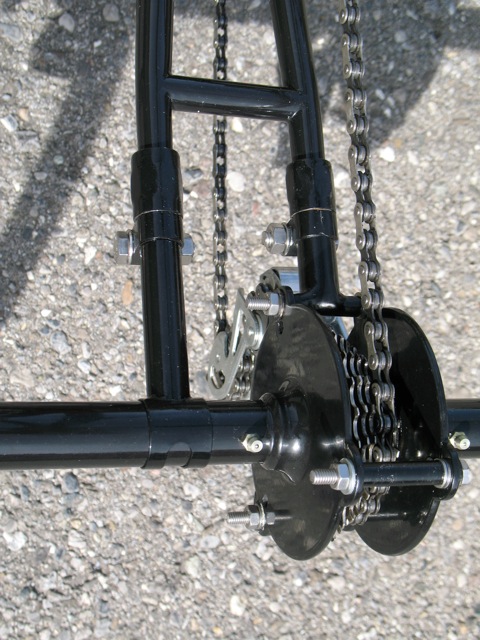
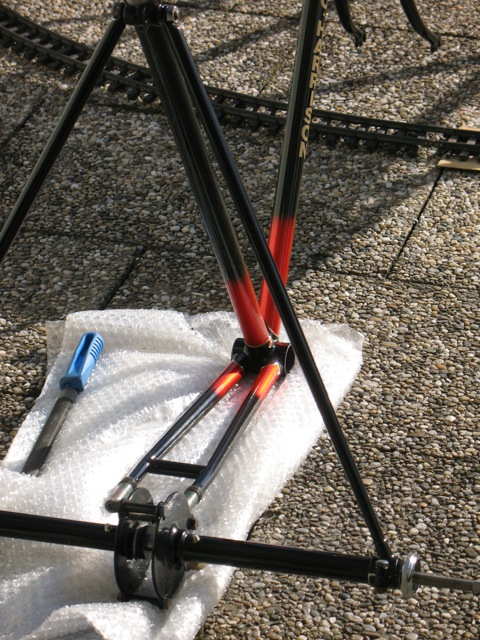
The bottom bracket is quite low and the distance between the chain stays too narrow to accommodate a wheel, which with the lack of provision for normal seat stays, confirm in my opinion that it could not be used as a bicycle. The rear end has been modified to take a larger sprocket as was originally intended and the right side plate has been tapped to take a gear hanger.
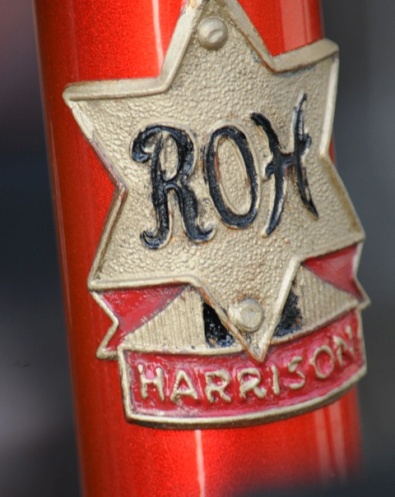
This would suggest that it was originally intended for fixed use only? I have restored it but not in a period typical paint job. It is quite a big bike with a 60cm frame but I believe trikes tended to be a little larger than a bike? It also sports the rare metal R O H head badge.
I agree I could have left it as was, but as a young man when a frame got scruffy I had it re-enamelled. I still do.
Because the paint job was F O C I allowed the painter free hand with how it should look. At first I was a little disappointed but now I love it.
One other point. Ball races are used on the rear axle inside but cones are fitted on the wheel side, the shell being screwed into the half axle tubes and gripped tight by the seat stays after being set.
Golden Age of Cycling Exhibition by Charles Jepson
The event, run under the banner of the Northern Counties Veteran and Classic Cycle Club, was held at Oakhill College in Whalley, Lancashire. The exhibition, a new venture for the National Clarion Cycling Club 1895 which is based at the College, attracted a display of 52 classic lightweight bicycles from a loosely defined Golden Age of 1930 to 1970. In actual fact the earliest bicycle was a 1902 Sunbeam. The exhibition saw a stunning display of machines and period equipment from a wide range of manufacturers, to name just a few: Berry and Bentley , Ernie Clements, A.J.Boult, Stan Pike, Ross, F.J.Sanders, Johnny Kay, Sun Solite, and of course Hill Specials as the College is just down the road from Padiham, the home of this famous Lancashire frame builder.
The afternoon ride, led by Robin Hatherall, saw twelve cyclists exhibiting the machines ‘in action’ on a 12 mile circular route through the relatively flat lanes of the beautiful, sun-kissed Ribble Valley. The riders were also treated to tea and biscuits at Robin’s home in Waddington courtesy of his wife Pat.
Will we run the event again next year? Probably, as all those who attended agreed it had been a most enjoyable day and we suspect that a repeat show will attract even more exhibits.
Peter Underwood
Sent a 12cm steel Cinelli stem to frame builder Winston Vaz (built frames many years for Roberts) who was willing to shorten it to 10cm. However, the Royal Mail managed to lose it and to add insult to injury sent me six first-class mail stamps as compensation! Subsequently I am looking for a 10cm Cinelli steel to replace the lost one, but will offer more than six stamps in exchange. I had removed the Cinelli badge from the 12cm stem and still have this of course. I now need a replacement 10cm stem to complete the restoration.
Peter Beaven has for sale
Frejus track bike for sale? It is a 56cm and has Frejus fittings.
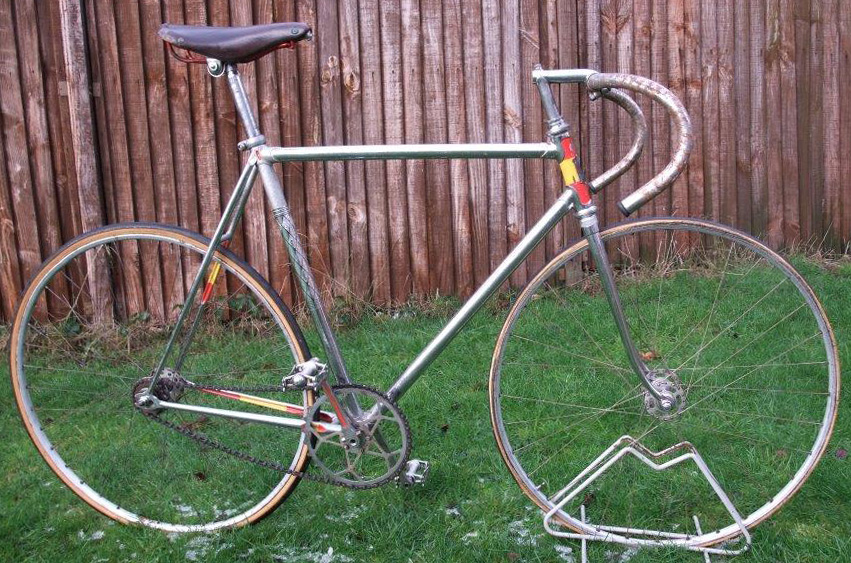
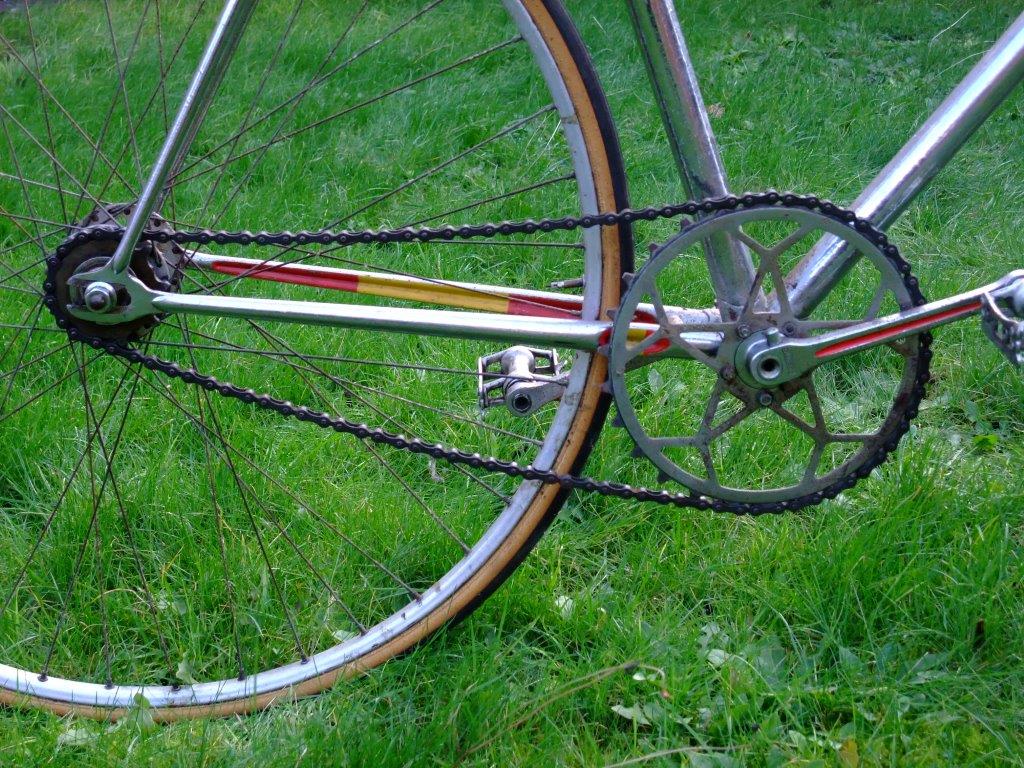
Frame No 020355, and judging by the dates on the head badge it should be around 1951-ish. It’s the early model and top of the range, hence the fluted stays and the slot cut in the seat tube lug. It has the Frejus BB, cranks and head set. Fiammi sprint rims. Drilled for a front brake. 1”pitch chain, ring and sprocket.
£650 + P and P.
John Bloomfield (Epping) has for sale a 23½” mid-1951 (present owner since 1953) Ephgrave for sale which was exhibited at Earls Court.
Conloy Rims
27″ Conloy rims on Campag hubs, Gnutti cotterless cranks with Chater ring, (also spare double chainring axle). Campag Nuovo Gran Sport gear mech with 6-speed block.
Brooks Swallow saddle in brown leather. Weinmann brakes,
Posted: Sunday 15th November 2015
This article appears in the following categories.
Upcoming Events
Whether you are looking for a gentle social meet up, or a 100-mile ride browse the community’s upcoming events and plan your next weekend outing.

